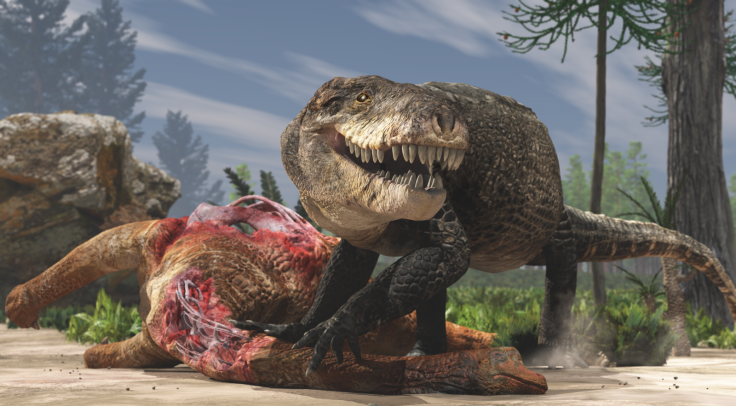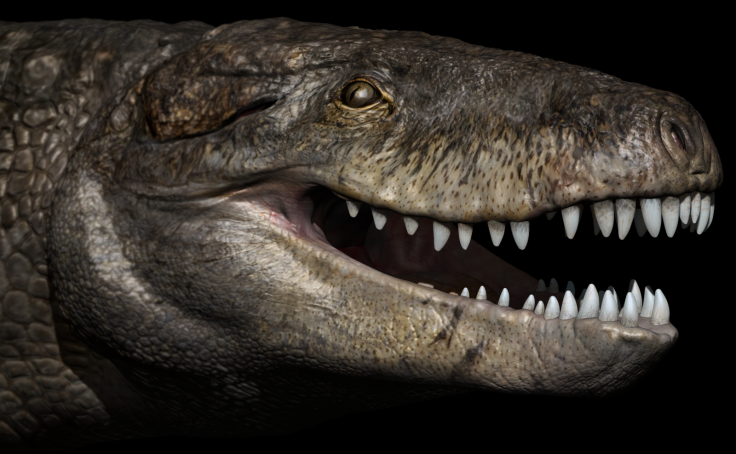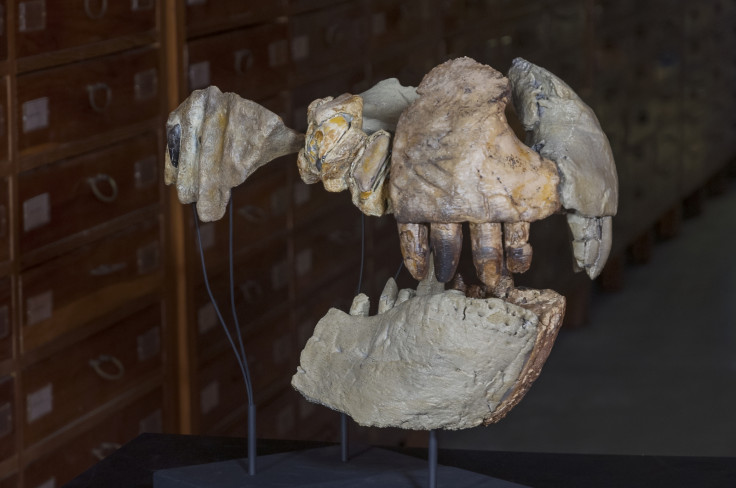Prehistoric crocodile had giant T-rex teeth, 165-million-year-old fossil reveals
The reptile's teeth were 15 cm long from root to tip.
The fossil of a large crocodile ancestor measuring about 7 metres long and weighing 1 tonne has been discovered. The beast had teeth as large, strong and deadly as Tyrannosaurus rex.
The elusive notosuchians, a member of the archosaurians, were fearsome predators in the Jurassic Period, long before T-rex evolved. Until now, only a few fragmentary bones have been discovered of this ancient group.
A fossil jaw part discovered near the village of Ambondromamy in north-west Madagascar, described in a study in PeerJ, has now painted a slightly fuller picture of what these large carnivorous reptile looked like.
The jaw shows that the predators had a crocodilian body shape and particularly terrifying teeth, measuring 15 cm from root to tip. The teeth also have serrated edges on their inner side, perfect for tearing into tough prey, breaking their bones and tendons.
The teeth are also particularly wide and expanded at the root. They were roughly shaped like halved bananas, a form known as 'pachydont teeth'. This tooth shape is much more like T-rex's broad teeth than other closer relations of the notosuchians.
The creature itself was about the size of a large saltwater crocodile, study author Cristiano Dal Sasso told IBTimes UK.

"Based on the preserved skull bones, we infer a body shape similar to that of baurusuchids, and consequently an overall length of 7 metres – 1.6m wide at the hips – and a weight of 800-1,000 kilograms," Dal Sasso said.
The specimen discovered – named Razanandrongobe sakalavae, or Razana for short – is thought to be the largest of the notosuchians as well as the most ancient. It is a full 42 million years older than the next oldest known specimen.

Razana is likely to have been the largest land-based predator of Madagascar in this period, soon after it split from the supercontinent Gondwanaland. It is thought to have been a hunter and a scavenger, capable of taking down prey or tearing apart an abandoned carcass. The size and shape of the jaw suggest it was powered by very strong muscles capable of crushing even the toughest prey.
"The large skull and, likely, body size, together with the peculiar feeding adaptations indicated by the dental and cranial features, suggest that Razana could compete with and occupy the ecological niches of theropod dinosaurs," said Dal Sasso.

© Copyright IBTimes 2025. All rights reserved.






















